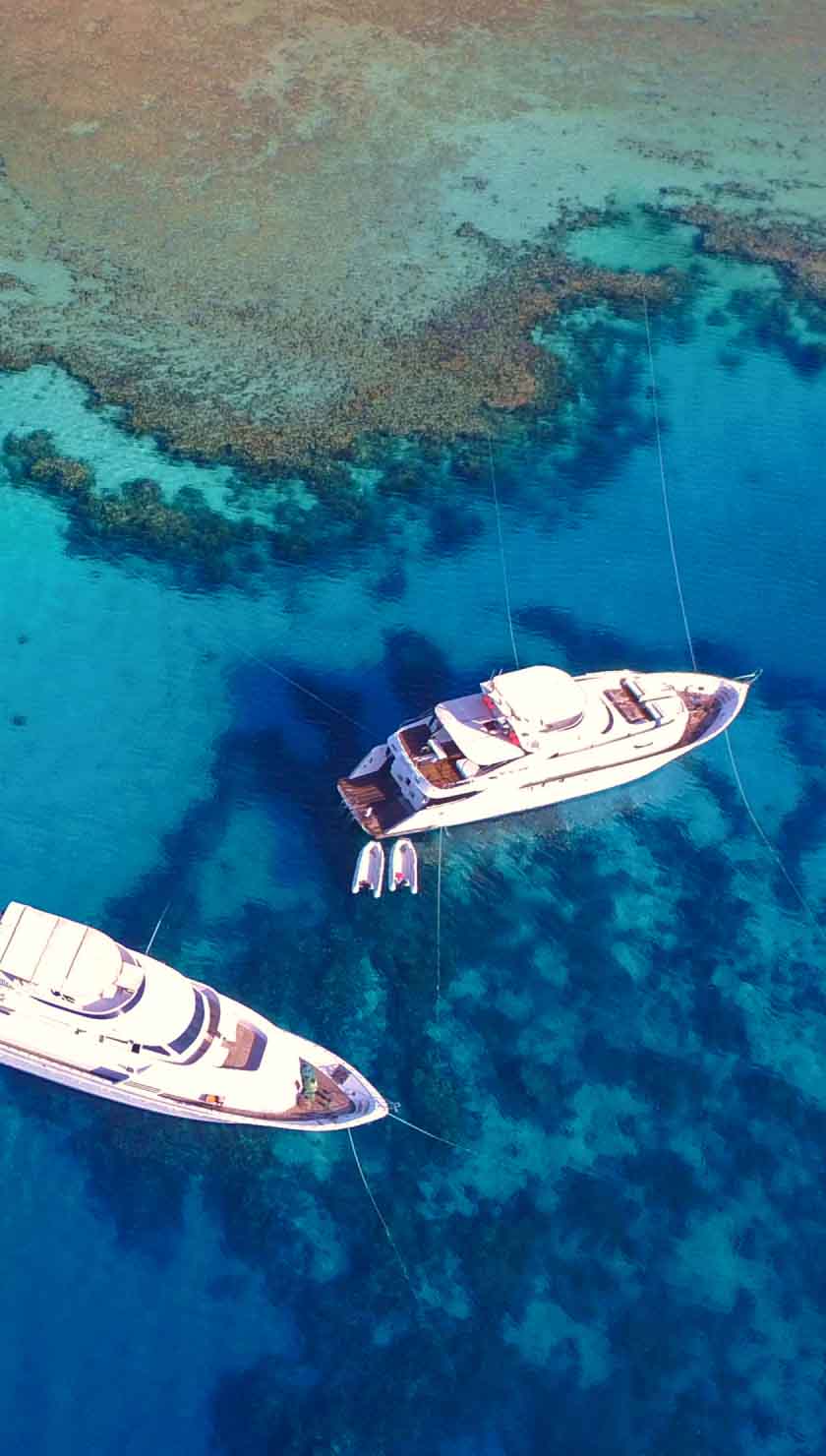Liveaboard Diving in Big Island
WHAT TO EXPECT ON A BIG ISLAND LIVEABOARD
Liveaboard diving in The Big Island dive area can offer divers some amazing dive opportunities. Located off the west coast of the island of Hawaii, the island itself varies greatly in terms of topography, climate, and weather, the popular west coast dive area of the Big Island is warm, sunny and dry. These qualities make it a prime destination for liveaboard dive vessels.
On the south side of The Big Island lies the world's largest volcano, Mauna Loa. This geological gem is not only one of the creators of the volcanic island itself but is a major reason why the west coast is such a hot spot for diving. Underwater lava formations from Mauna Loa's past eruptions are a true thing of beauty that must be seen to be believed. Scuba divers on a liveaboard dive trip will experience gorgeously unique underwater topography, Mauna Loa is also to thank for the serene waters of the west coast, as the towering mountain blocks the coast from the easterly winds and weather conditions.
THE BIG ISLAND UNDERWATER
The Kona coastline is quite indicative of what the underwater topography looks like. The setting is extreme, rugged, and dramatic, with volcanic basalt and hard coral formations as the primary topography. The monstrous jutting mountains that make up most of the landmass slope into the surrounding waters and drop suddenly into the deep abyss. The deep waters created from the underwater continuation of the mountains draw large pelagic creatures to the area. Here you can see sharks, whales, dolphins, and the magical Manta Ray.
Bring your underwater camera to capture images of creatures seen only in the waters of Hawaii. Endemic species include the Hawaiian lionfish, Redstripe Pipefish, Psychedelic Wrasse, and a number of Butterfly Fish and Angelfish species. It is likely that at some point throughout your liveaboard itinerary week you will spot one or more of these amazing species: Spinner Dolphins, Bottlenose Dolphins, Spotted Dolphins, Green Sea Turtles, Hawksbill Turtles, Oceanic Whitetip Sharks, Whale Sharks, Pilot Whales, and depending on the time of year, Humpback Whales.
DIVE SITES OF THE BIG ISLAND
PARADISE PINNACLE Just as the name suggests, the highlight of this site is a tall pinnacle protruding from the ocean floor.
TUBASTREA TUNNEL Appropriately named, this oversized swim-through tunnel is covered in tubastrea coral is the main highlight of this dive site.
TURTLE PINNACLE See these gentle, docile creatures in their natural habitat here at their cleaning station.
TOP TIPS FOR DIVERS
Packing light is highly recommended on liveaboard trips. While accommodations are quite comfortable, storage can be limited. Casual and lightweight clothing is acceptable to wear. A lightweight jacket or sweater may come in handy for evenings, as temperatures on the water are usually cooler than on land. High quality, biodegradable sunscreen is a necessity in the strong tropical sun.
Filled tanks, weights, and weight belts are provided at no charge. Adequate storage lockers are available for the diver traveling with gear, or equipment rental is available for an additional charge for divers who are not traveling with gear.
Presentation of current certification card is required upon diving. Don't forget to bring along your dive log as well so as to track dive specs and record amazing sights seen.
Hawaii is the 50th state of the U.S., therefore the U.S. dollar (USD) is the national currency and English is the primary language.
GETTING TO THE BIG ISLAND
Exciting dive sites are plentiful around the Big Island. In order to effectively manage your time and make sure to get the most out of your dive holiday, setting sail on a Hawaiian liveaboard dive cruise is the best option. Explore far off sites aboard a dive tour that most land-based dive operators wonít go the distance to. Book a dive trip through Liveaboard.com and set sail to the areaís most remarkable dive sites. 7 night/8 day tours depart for The Big Island dive sites year-round.
Kona International Airport (KOA) is conveniently located a short 20-minute drive from the port of departure, Kailua Pier. Airlines that operate out of KOA are Air Canada, Alaska Airlines, American, Delta, Hawaiian Airlines, United, US Airways, and WestJet. Island Air and GO! Mokulele also operates out of KOA, offering interisland service and connecting international flights. Nonstop service is offered between Kona and the cities of Vancouver, Canada, Seattle WA, San Jose CA, Oakland CA, Portland OR, Los Angeles CA, San Francisco CA, Denver CO, Chicago IL, and Phoenix AZ.
Transfers to and from the airport are not included in the price of the liveaboard tour and are the sole responsibility of the consumer. There are several private and shared shuttle and taxi services available on the airport grounds. These can be booked ahead or flagged upon arrival, depending on the operator of choice.











